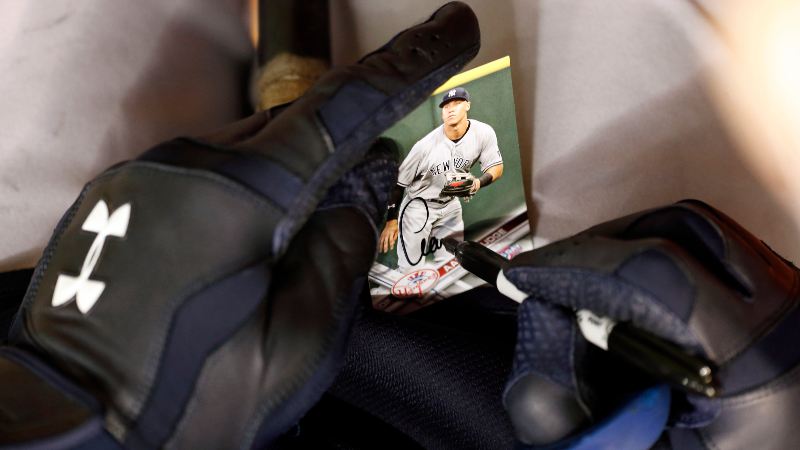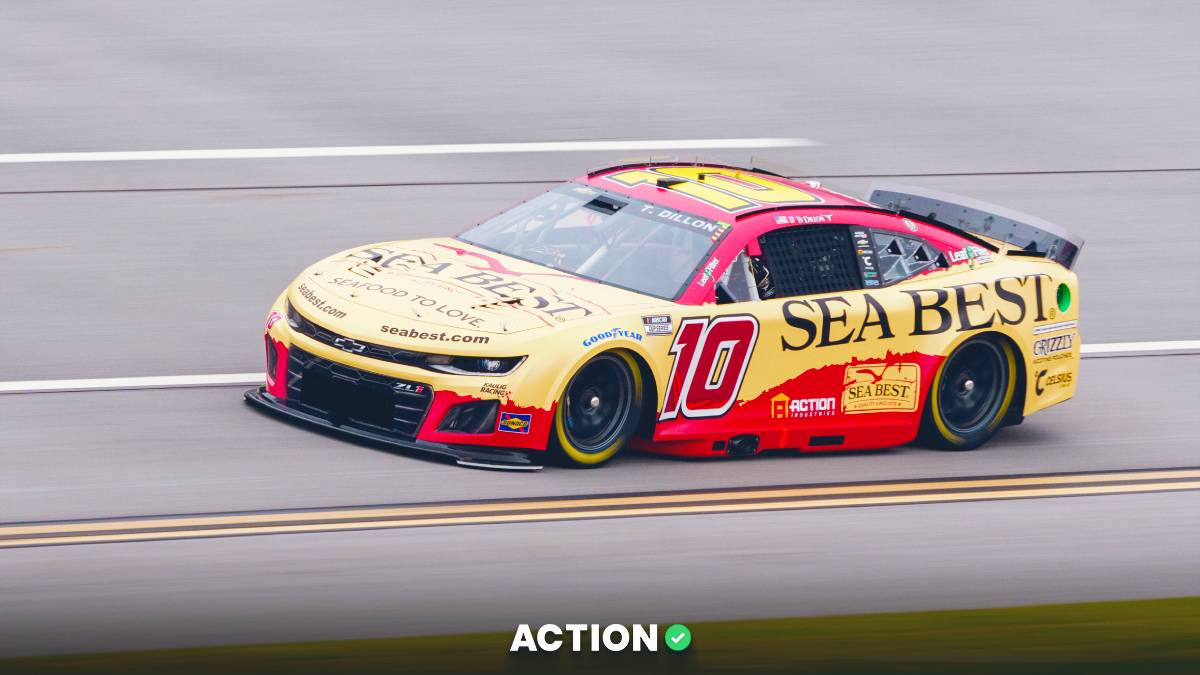Ahead of the annual National Sports Collectors Convention next week in Chicago, the sports card market is in crisis mode.
The largest seller of cards on eBay, PWCC, with more than $60 million in annual sales, has been caught up in a scandal, having sold millions of dollars worth of cards that were altered.
They’re refunding any card thought to be compromised and getting them out of circulation by turning them over to the FBI. Founder Brent Huigens is being represented by Jeffrey Lichtman, who has been involved in card fraud cases in the past, and recently represented notorious Mexican cartel kingpin Joaquin “El Chapo” Guzman.
PWCC isn’t talking. Huigens isn’t talking. Lichtman didn’t return a phone call from The Action Network.
PWCC is trying to appease consumers immediately with make-goods, deciding to aggressively save face. PSA, a division of public company Collectors Universe, which graded many of those altered cards so that they became higher graded and thus more valuable, has accepted no public responsibility.
That’s despite a guarantee that backs up their grading and offers to refund the difference between the market value price commensurate to their grade and a new grade.
This alone could result in tens of millions of dollars of refunds. For example, there are six 1952 Topps Mickey Mantle cards that PSA has graded as a Mint 9. One sold last year for $2.88 million. If any of these cards are discovered to be altered, they could be valued at say, $20,000 instead of $2.8 million. PSA, under their current terms, would be responsible for the difference.
Complicating matters for Collectors Universe is that their 2018 Annual Report confirms that they don’t have insurance on the guarantee and lists the fact that they could come into a situation where they wouldn’t have enough reserves to pay it back as a material risk to their business.
Despite the threat, executives for the company have been brash, if anything, in their limited public response.
In a letter to his customers on Wednesday, Collectors Universe CEO Joe Orlando doubled down on his company accepting no fault for grading trimmed cards, placing the blame on those involved in the trimming.
“Like most other industries, ours contains a fraction of people who choose to do nothing more than complain about how third-party systems are imperfect, instead of offering feasible or logical ways to make it better,” Orlando wrote. “Their expectation of human-based opinion services is simply unattainable.”
“The train left the station long ago. You can choose to get on board and take the ride, which can occasionally get bumpy along the way, or get left behind with delusions that somehow returning to the Wild West of the 1980s is better than what collectors have today.”
While Orlando expresses confidence publicly, he has sold off more than 34% of his stock holdings in the last 10 months. On July 1, the CEO sold off 15.6% of his stock, a significant number when considering that, in September, he sold 22.8 percent of his stock.
A PSA spokesperson, citing the need to cooperate with internal and external investigations, said executives wouldn’t be available for comment.
The cards turned over to the FBI were trimmed, a long-time trick in the trading card industry. Trimmers aim to cut the card in a way that makes it more mint, and the gets a higher grade, while seeking to keep the card’s proportions relatively in tact so as to trick the grader.
Trimming takes advantage of the fact that card cuts, especially on vintage cards, vary greatly, so trimming off a fraction of it to make the corners sharper can go unnoticed. With thousands of cards trimmed, and the trimming changing grades from 5’s to 9’s, it’s a multi-million dollar industry that there’s been no answer to solving.
Even the news that the most high-profile card in the hobby, the T206 Honus Wagner, was trimmed didn’t stop the rise of card grading.
Left for dead in the mid-1990's after huge print runs busted any business upside, the market came back thanks to false scarcity created by card-graders who rendered quantity useless and quality everything.
For the hobby, the graders served as regulators of the industry, when in reality they weren’t overseen by anyone. Grading cards better than they actually are helps the bottom line, as cards that come back with better grades cost more to the submitter.
But it was better than it used to be. Collectors welcomed this system that was better than each person making their own judgment on how mint their card was, especially as eBay came along.
The biggest beneficiary of card grading and eBay, besides PSA, was PWCC. They sold vintage cards that skyrocketed in value like the 1952 Topps Mickey Mantle cards, and even sold pristine modern cards like a 1997 Michael Jordan card that went for $350,100.
And all the while, Huigens of PWCC had a public relations executive who would pitch writers to tell the story about why baseball cards were a better investment than anything else.
At least some of this was based on a house of cards. In order to convince people that data was on his side, Huigens’ team started a price index based on the sale prices of the 100 and 500 most valuable trading cards.
The index revealed, according to Huigens, that through Dec. 31, 2018, a 10-year return on investment on the top 500 trading cards would be 165% compared to a 71% return for the S&P 500.
“Trading cards are easily the most liquid of all tangible assets, and this factor is continuing to drive attention towards them, especially new wealth,” Huigens told David Seideman of Forbes, which published many pieces of Huigens data and bold projections.
But there were problems.
Primarily that the market wasn’t real. The top cards that were entered in the database sometimes didn’t even sell for what buyers agreed to pay. eBay doesn’t have any notation after a bid wins whether the buyer actually paid. PWCC’s database assumes they did. And more damaging? The market for the top cards sold at prices inflated by a rigged market.
Rigging the market, as it was rigged, wasn’t illegal but it was certainly unethical. In card rigging, a small group of sellers pick a card to target. They buy up the best exemplar, let’s say a rookie card in a 9.5 grade. Next, they buy lower-end versions of that card. From there, there’s two ways it can go. They can shill-bid (bidding, or having someone else bid, on your own item to drive up value) the card and even win it, but not pay for it. The public then thinks the card went for that value.
Or the fraudsters could actually win the lower-end auctions at high prices because there’s still a profit to be had. With the lower prices serving as a reference, the higher-graded top exemplar makes a huge profit.
Once the top card is dumped, the pump-and-dump collectors move on and the market for that card deflates.
Take, for example, a card in the top 100 for PWCC, the 1955 Topps Roberto Clemente card. Clemente is a good example because he is no longer alive, meaning there’s nothing that can really change the perception of his card. Here are the prices reported as sold for a PSA 8 Clemente Rookie:
- January 2015 — $29,127
- October 2015 — $35,864
- May 2016 — $131,450
- July 2016 — $150,391
- November 2016 — $38,500
- November 2018 — $26,400
Why did the price crater in four months in 2016? Because the market-fixers moved on to another card.
This has been done with more than 50 vintage cards (though some of the rises and falls are not as dramatic as the Clemente card) but these cards were in the PWCC index because they were among the most valuable.
Adding it all up, it’s a tremendously damning snapshot of the marketplace.
The largest seller not denying its part in a selling trimmed cards. The largest card authenticator, which has a guarantee that stipulates to refund the value of the mistake if it messes up the grading, not accepting any responsibility. Markets being rigged and validated by a price guide whose numbers are compromised and not based in reality.
The card market has survived many waves. Will it make it through another storm? The first indication will come next week when all the players in the marketplace — the buyers, graders and sellers — meet face to face.























































